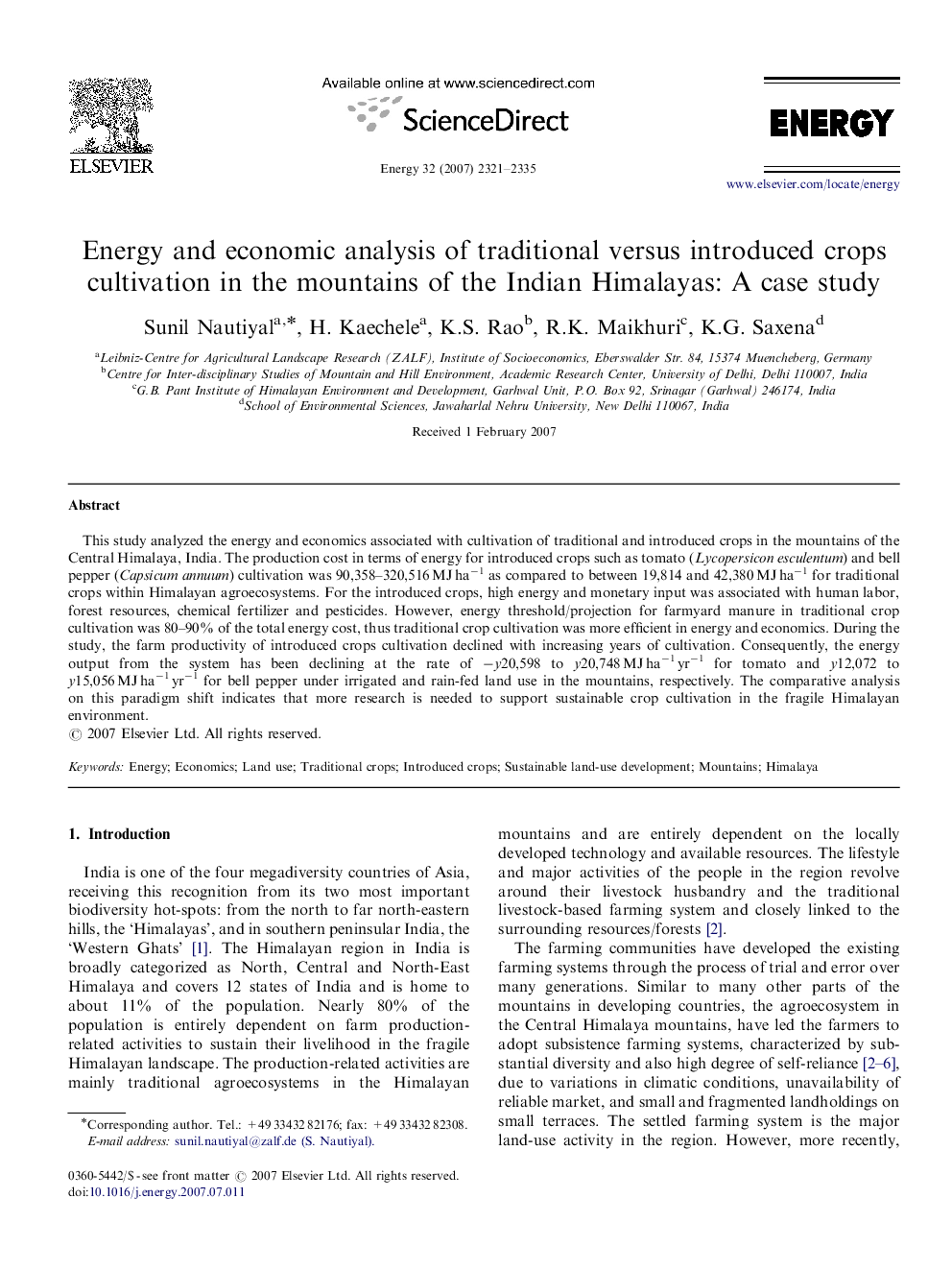| Article ID | Journal | Published Year | Pages | File Type |
|---|---|---|---|---|
| 1735982 | Energy | 2007 | 15 Pages |
This study analyzed the energy and economics associated with cultivation of traditional and introduced crops in the mountains of the Central Himalaya, India. The production cost in terms of energy for introduced crops such as tomato (Lycopersicon esculentum) and bell pepper (Capsicum annuum) cultivation was 90,358–320,516 MJ ha−1 as compared to between 19,814 and 42,380 MJ ha−1 for traditional crops within Himalayan agroecosystems. For the introduced crops, high energy and monetary input was associated with human labor, forest resources, chemical fertilizer and pesticides. However, energy threshold/projection for farmyard manure in traditional crop cultivation was 80–90% of the total energy cost, thus traditional crop cultivation was more efficient in energy and economics. During the study, the farm productivity of introduced crops cultivation declined with increasing years of cultivation. Consequently, the energy output from the system has been declining at the rate of −y20,598 to y20,748 MJ ha−1 yr−1 for tomato and y12,072 to y15,056 MJ ha−1 yr−1 for bell pepper under irrigated and rain-fed land use in the mountains, respectively. The comparative analysis on this paradigm shift indicates that more research is needed to support sustainable crop cultivation in the fragile Himalayan environment.
